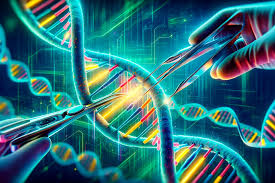The Theory of Relativity is one of the most significant scientific advancements of the 20th century, developed by the renowned physicist Albert Einstein. It revolutionized our understanding of space, time, and gravity, forming the foundation for modern physics. This theory consists of two key components:
- Special Relativity (1905) – Deals with space-time and motion at constant velocity.
- General Relativity (1915) – Explains gravity as a curvature of space-time.
Special Theory of Relativity (1905)
Einstein introduced Special Relativity in 1905, demonstrating that the laws of physics remain the same for all observers in uniform motion. Some key aspects of this theory include:
- Time Dilation: Time slows down as an object approaches the speed of light.
- Length Contraction: Moving objects appear shorter in the direction of motion.
- Mass-Energy Equivalence: The famous equation E = mc² states that mass and energy are interchangeable.
General Theory of Relativity (1915)
In 1915, Einstein extended his theory to include gravity, proposing that massive objects warp space-time, causing the effect we perceive as gravity. Important concepts include:
- Gravitational Time Dilation: Time runs slower in stronger gravitational fields.
- Black Holes: Extremely dense regions where gravity is so strong that not even light can escape.
- Gravitational Waves: Ripples in space-time caused by cosmic events like colliding black holes.

Why This News is Important?
Scientific Breakthroughs & Modern Applications
The Theory of Relativity remains highly relevant in modern science and technology. It helps explain astronomical phenomena, GPS systems, nuclear energy, and space exploration.
Impact on Competitive Exams
Students preparing for government exams such as UPSC, SSC, banking, and railway exams often encounter questions related to scientific discoveries and Nobel Prize winners. Understanding Einstein’s contribution is crucial for general awareness.
Historical Context
Einstein’s Journey & Recognition
- Albert Einstein published the Special Theory of Relativity in 1905, followed by General Relativity in 1915.
- In 1921, he was awarded the Nobel Prize in Physics (not for relativity but for the photoelectric effect, which also supported quantum mechanics).
- His theories were confirmed through astronomical observations, including gravitational lensing during the 1919 solar eclipse.
Modern Relevance
- GPS Technology relies on time dilation corrections from Einstein’s equations.
- NASA and space research use relativity to calculate spacecraft trajectories.
- Gravitational waves, first detected in 2015, further validated his predictions.
Key Takeaways from Einstein’s Theory of Relativity
| S.No | Key Takeaway |
|---|---|
| 1 | Albert Einstein developed the Theory of Relativity, consisting of Special and General Relativity. |
| 2 | Special Relativity (1905) introduced the concept of time dilation, length contraction, and E=mc². |
| 3 | General Relativity (1915) explained gravity as the curvature of space-time. |
| 4 | The theory has practical applications in GPS, space travel, and nuclear energy. |
| 5 | Einstein won the Nobel Prize in 1921 for the photoelectric effect, not relativity. |
FAQs
1. Who developed the Theory of Relativity?
Albert Einstein developed the Theory of Relativity, which consists of Special Relativity (1905) and General Relativity (1915).
2. What is the significance of E=mc²?
The equation E = mc² shows that energy (E) and mass (m) are interchangeable, with c² (speed of light squared) as the conversion factor.
3. How does General Relativity explain gravity?
General Relativity describes gravity as the bending of space-time caused by massive objects rather than a force pulling objects together.
4. Why was Einstein awarded the Nobel Prize?
Einstein won the 1921 Nobel Prize in Physics for his work on the photoelectric effect, which contributed to quantum mechanics, rather than relativity.
5. What are some real-world applications of relativity?
The Theory of Relativity is used in GPS technology, satellite communication, nuclear energy, space travel, and black hole research.
Some Important Current Affairs Links


















